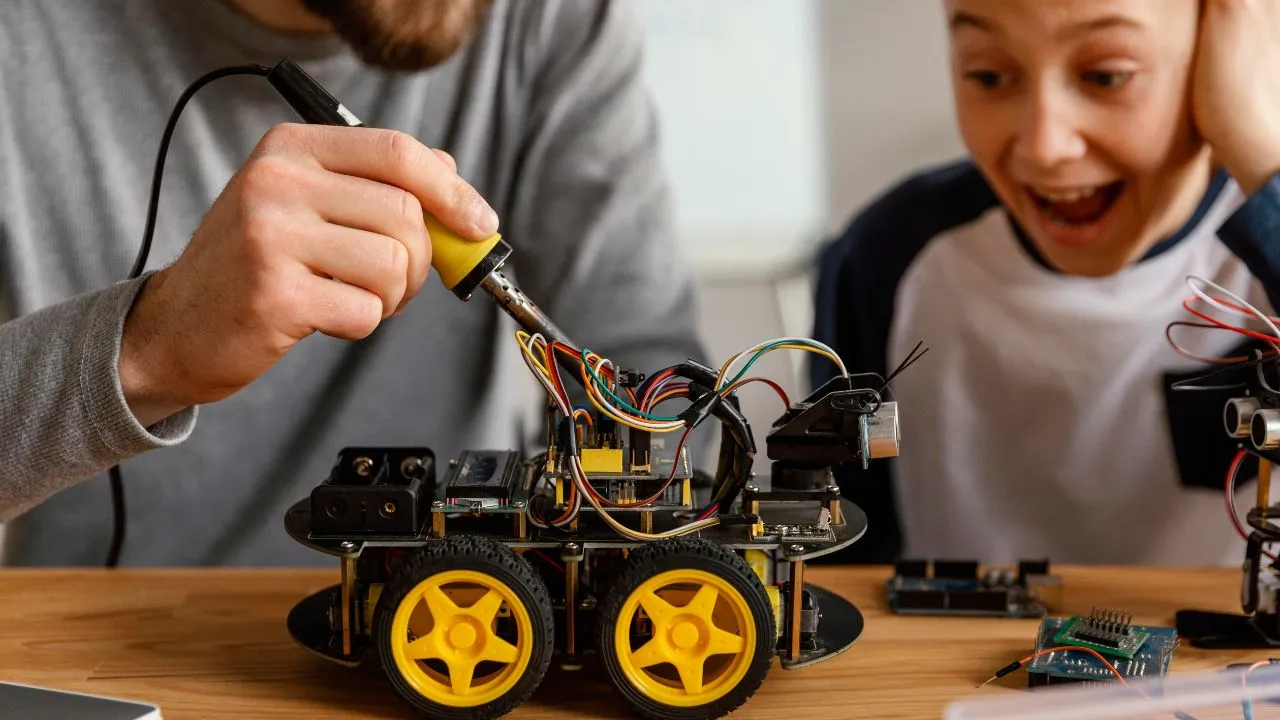How to Explain machine learning for kids
As to IBM, machine learning is a subfield of artificial intelligence (AI) that centers on replicating human learning using data and algorithms, enhancing the computer’s decision-making accuracy over time—machine learning for kids.
Of course, there’s much more to it than that, but how exactly do you introduce machine learning to a five-year-old, for example?
We have a method that you may use to explain machine learning to a child. Here’s an example of how we may respond to a question on “What is machine learning in simple terms?” from someone.
Explaining machine learning for kids the easy way
You can teach a five-year-old child the basics of machine learning by explaining that it happens when computers access data. This enables them to eventually learn how to make judgments on their own without guidance from a person.
For instance, if a robot utilized machine learning to navigate a room and ran into a wall five times, it would eventually figure out that walls were impassable. It would thus turn aside to pursue a different path the sixth time it came near a wall.
For older children, you might explain machine learning like this: Machine learning continuously analyzes data, discovering patterns from past outcomes, mimicking human learning to develop, evolve, update, and enhance itself.
Artificial intelligence (AI) is used in many commonplace technologies, such as virtual assistants (Alexa, Google, Siri). About Alexa, Bernard Marr penned this:
Each instance of Alexa misunderstanding a request contributes to refining the system’s performance for future interactions. The voice-activated user interface is rapidly advancing its capabilities, thanks to the application of machine learning. For instance, in only a year, Google Speech significantly reduced its error rate and currently recognizes 19 of every 20 words it hears.
That might be a bit difficult for younger children to comprehend, so let’s go back to the fundamentals of teaching machine learning to a child.
How machine learning works in simple terms
By providing computers and other machines with access to data, or knowledge, machine learning enables them to learn on their own—without the need for human programming, input, or speech.
To put it simply, there are three ways that machine learning can include:
- Computers monitor and mimic other people’s actions, and then repeat those actions.
- After seeing and gathering data, computers employ logic to draw conclusions based on past experiences.
- Computers pick up on lessons from past errors.
How kids can learn about AI and machine learning
Artificial intelligence is already a part of our lives and will only become more prevalent. Because AI has so many applications, it’s important to learn about it, and there’s no better way to learn than with online coding classes. Learning to code is a great way to understand AI, so give it a try you might be surprised at what you can accomplish.

